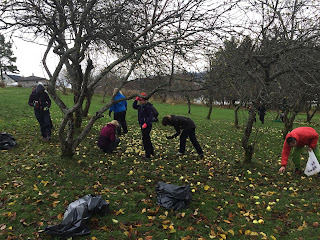Nature reserves in our neighborhood, Bålsta, Sweden
We have worked with Nature reserves. In Sweden, and in Bålsta, there are a lot of nature reserves. It´s a challenge of our region to beware the nature, the birds, the flowers, the drinkable water in our big lake Mälaren and to be able to breathe the air. We live in a part of Sweden where there is a lot of people, industries and traffic. We people are stressing our region hard.The nature reserves is an important deal of environmental work in our region.
Why do we have nature reserves?
- Preserving biodiversity
- Nurture and preserve valuable natural environments
- Meet the needs of outdoor recreation areas
- Protect, restore and innovate valuable natural environments
- Protect, restore or innovate habitats for protected species
We have eight nature reserves in Bålsta, one of them is protect by the municipality and the other by the state.
Our intention are to visit as many nature reserve we have time for during this project. So far we´ve visited four of them.
Granåsen - It´s a popular place quite near our school where we can go skiing down hill and cross country, a place to have camp fire, a lot of activities according to out door sports and relaxing. A popular place to pick berries and mushrooms and study endangered animals and plants. Some trees are over 180 years. The nature reserve was created to preserve the old pine tree forest and the leafy woodland forest, as well as the possibility of nature experiences and active outdoor life near the city.
We´ve also visited Hjälstaviken, one of Sweden's finest bird lakes. Years around there are exciting things to see. Autumn and spring races thousands of migratory birds, in winter you can leaf other after the eagle, and in the summertime you will see and hear lots of bird families.
The cattle have been used and the wetlands have been used for mowing and this, together with the land raising, has created the bird paradise that exists today. Sandviksåsens nature reserv - an important ridge that goes through the landscape we live in. It is a real paradise for all kinds of birds, insects and plants that need old trees and deadwood to survive.
Along the ridge's northern slopes, one can see clearly terrace-like ledges. There are so-called ancient shorelines that shows where the water level has been during different time periods. On the ridge, the southern part is the remains of an ancient castle. From there, they had a good view of the waters and could quickly see if foes approached. If there was an attack was the steep slopes easier to defend.
There are some simple rules to consider when staying in a nature reserve. If we follow them, we can preserve Sandvik ridge ancient monuments and rich nature for future generations. Bishop-Arnö is a very attractive island about 10 kilometers north of Balsta that have a long history and a beautiful landscape of woods, fields and pastures. In the spring, covered the grounds of bluebells and wood anemones. The island has a long history with buildings left over from the Middle Ages. Early built here a bishopric where the Archbishops could stay in summer. Later also lived Gustav Vasa on the island. In the 1800s, took Hans Henrik von Essen farm. He thought there was no ancient monuments in the area and had therefore create a number of these around the Island. Bishop-Arnö has high natural values mainly linked to the island's ancient hardwood trees and grazed pastures. A significant part of the island is therefore covered by the European network Natura 2000.
Biskops-Arnö in the past Text and some photos pupils from Aspen, Gransäterskolan, Sweden.





Cyprus says … Well done!
ReplyDelete